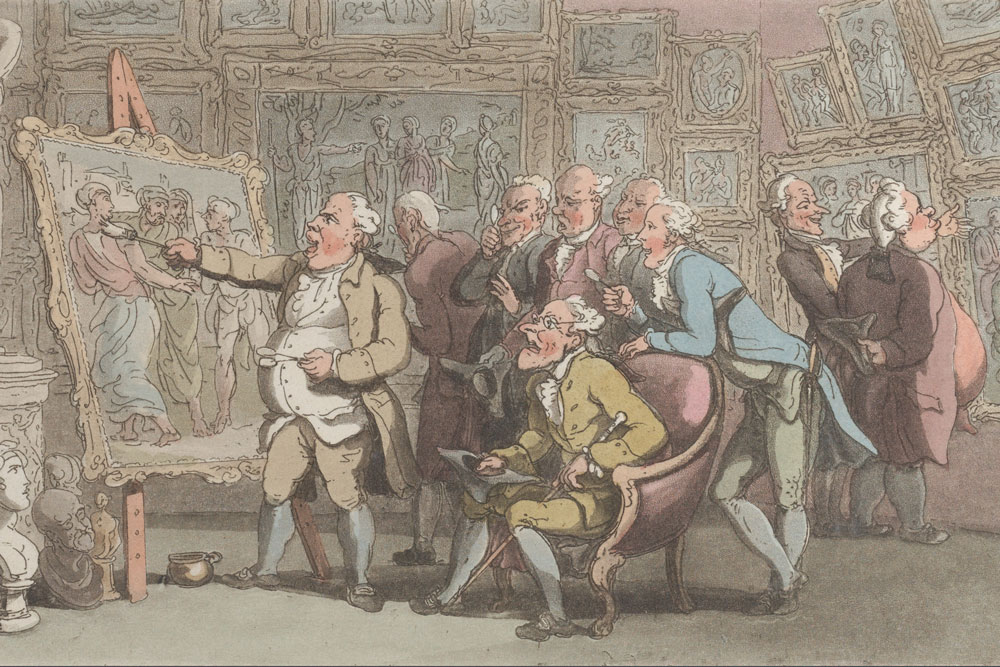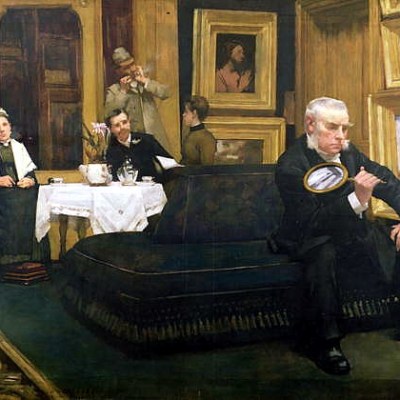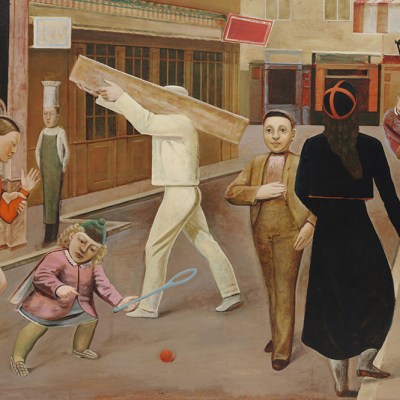From the November 2025 issue of Apollo. Preview and subscribe here.
In September this year, the Art Business Conference held an interesting panel on connoisseurship, featuring three London dealers: Cornelia Grassi of the gallery greengrassi, Milo Dickinson, managing director of Dickinson, and Oliver Miro of Victoria Miro. The two latter are sons of the founders, carrying on a tradition established by their parents. Grassi is currently the chair of the Society of London Art Dealers, which includes both traditional and contemporary art galleries. She also comes from a family steeped in connoisseurship, so while she represents contemporary artists, she is no stranger to the Old Master world.
What is connoisseurship exactly? It is the trained judgement – and the word ‘trained’ is important – that allows someone to recognise the distinctive qualities of an artist’s hand, style, composition and the period in which a work was created. It also includes expertise on the art-historical context and work by other artists of the period.
One of the topics discussed at the conference was whether connoisseurship can be applied to contemporary art. In general, connoisseurship is thought of in the context of older works of art. Why? Because usually, with contemporary art, the artists themselves are around to give an opinion. When it comes to Old Masters or any work whose creator is no longer there to consult, authenticity can be decided by the classic methods: provenance, forensic examination of pigments and support, along with consultation of a catalogue raisonné.
But today, connoisseurship matters as much as ever – possibly even more in contemporary art, if only because of the sheer dominance of post-war and contemporary art, which remained the largest segment of the fine art auction market in 2024, according to the Art Basel & UBS report.

Miro tells me later: ‘Of course connoisseurship is important for contemporary art! It means really understanding the artists that we represent, understanding everything about them and the context for their work. You need a wider understanding of the whole art world, and of art history. You need a deep knowledge of everything, why the artists made a work, how it fits into their oeuvre – even down to the markets, where those works were placed, where they are now, what museums have them. But there probably 20 different interpretations of that word!’
But Cornelia Grassi said: ‘I don’t even think connoisseurship is the right word; in a way it is an old-fashioned way of looking at things. People in Old Masters believe that this is their terrain, and only their terrain, whereas there are people in contemporary art that are extremely knowledgeable about, let’s say, the history of the works of certain artists from the 1950s.’ She continued: ‘When you think of a gallery like Metro Pictures’ – the now defunct New York gallery that represented Louise Lawler, Mike Kelley and Cindy Sherman, among others – ‘[they] worked with certain artists over 30 or 40 years and they had knowledge of every single piece that those artists produced. These are very special relationships with artists – and they have nothing to do with the market and the financial value of the work.’
Connoisseurship in contemporary art is also important for the art market, and determining the importance of a particular piece within an artist’s oeuvre can be crucial to its price. In addition, exploding values have also led to a rise in counterfeiting. In November 2024, more than 2,000 counterfeit Banksy pieces were seized in an investigation coordinated by the Italian police, who uncovered a sophisticated forgery network involving workshops in Italy and other European countries, including Spain, France and Belgium. In 2022 the Orlando Museum of Art saw its Jean-Michel Basquiat exhibition ‘Heroes and Monsters’ raided by the FBI and all 25 works of art on show impounded as fake.
Then there are artists who have apparently changed the dating of their work. Damien Hirst, for example – who is not the first to have done this – was found to have misdated four of his formaldehyde works, including The Unknown (Explored, Explained, Exploded), which was dated to 1999 but was in fact produced in 2017. Add to that the thorny question of assistants. While they have always existed, in recent years they have become more assertive, some claiming authorship and a share of the selling price: take the case brought by Michael Moi against glass artist Dale Chihuly or that brought by Daniel Druet against Maurizio Cattelan’s galleries, both of which were dismissed. There is even the bizarre case of Peter Doig, forced to go to court to disclaim authorship of a painting which the owner said was done by the artist (‘Pete Doige’) as a student at a university he never attended (the judge ruled in favour of Doig). In all these instances, expertise was essential to determine who was right and who was wrong, and in some cases large amounts of money were at stake.

There are specific aspects of contemporary art which make connoisseurship more difficult. Art specialists trained in traditional media, who may be used to appraising style, technique, brushstrokes, patina on bronze and so on, may be less well equipped in cases of conceptual or post-modernist work where the ‘quality’ is not purely visual. And then there are ready-mades such as Duchamp’s Fountain and many other such repurposed items, where knowledge of the context is essential. Add to that the thorny subject of digital artworks, which might exist in multiple identical editions, or constructed situations, such as immaterial performances by Tino Sehgal. Here expertise shifts from visual analysis to understanding the concept and the protocols – but is no less important.
One final point was made by Oliver Miro, who expressed his worry that the internet is replacing connoisseurship. ‘Fifteen or twenty years ago, people would seek out an expert in the field, go to a gallery or auction house,’ he said: ‘Now they might just go on social media look at how many “likes” an artist gets on Instagram […] and if there are just a few, they could come to a wildly wrong conclusion. Artificial intelligence has almost become the authority, and people think it is always correct,’ he said: ‘It’s incredibly dangerous and undermining the very notion of connoisseurship, in all the sectors, older art and contemporary.’
From the November 2025 issue of Apollo. Preview and subscribe here.



